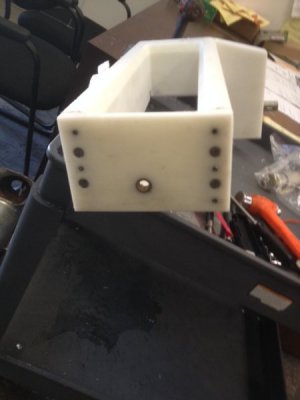- Joined
- Feb 17, 2013
- Messages
- 4,415
IIRC, chips or shavings of nylon smell a bit like burnt hair when lit. Polyethylene-family plastics (including polypro) burn readily with little smell. PVC tends to give off a sharp odor (from the chlorine). Both nylon and PVC will sink in water. Polyethylene/polypro will float. These are "first approximation" field tests I recall from my engineering days.It looked like natural colored Delrin, machined like it, but didn’t hold up in use like it. So I did some homework. Found out that when you put a flame up to Delrin chips it will give off a smell similar to formaldehyde. This plastic I have does not do that.

